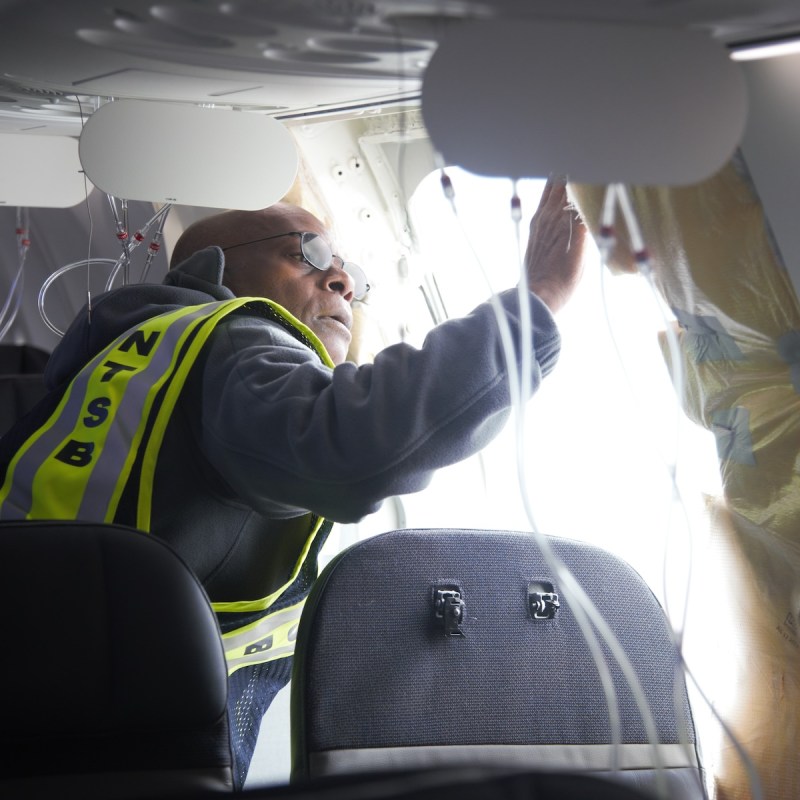
Last week’s accident in which the door plug blew out of a Boeing 737 Max 9 aircraft has caused a cascade of problems for the airline industry, including increased concerns about safety. The latest news, as of Tuesday, is that Boeing is revising inspection and maintenance instructions to include feedback it received from operators. Meanwhile, the Federal Aviation Administration (FAA) has grounded every 737 Max 9 aircraft until each one can pass an inspection and safely operate.
Videos by TravelAwaits
For updates, the National Transportation Safety Board (NTSB) has taken the lead as it’s the federal agency leading the investigation into the accident — which investigators stressed was in fact an “accident” and not an “incident” — that occurred during an Alaska Airlines flight out of the Portland International Airport on Jan. 5.
According to the preliminary findings, the door plug behind the plane’s portside wing separated from the airframe minutes after takeoff and caused an uncontrolled decompression of the aircraft. Although the plug blew off right around 16,000 feet, investigators say the plane’s frame remained intact and the flight crew took prompt action and made an emergency landing. Also, despite having 171 passengers onboard, no one was seated next to the plug and no one was killed as a result of the accident. However, a handful of people did suffer minor physical injuries.

Investigators also stressed that the door plug was all plug and no door because it could not be used as a door. They explained that when buying that particular airframe, Alaska had the option of either installing a door plug or an emergency exit. The decision, though, was dictated by the number of passengers the plane could seat. In this instance, the plane was designed to seat 189 passengers, so it did not need an emergency exit in that location on the plane.
Alaska Airlines and Boeing, which are both assisting in the NTSB investigation, have taken action in response to the accident. Since Friday, Alaska has canceled hundreds of flights and offered passengers impacted by the cancelations refunds or rescheduling options. The company said that its fleet of 65 737 Max 9s will only return to service after receiving maintenance and passing FAA safety inspections.
In a series of statements, Boeing said: “We agree with and fully support the FAA’s decision to require immediate inspections of 737-9 airplanes with the same configuration as the affected airplane.” The FAA said there are approximately 171 737 Max 9s used by commercial airlines. Besides Alaska, two other carriers reportedly use the design, including United Airlines and Panama’s national carrier Copa Airlines. Since the accident, Boeing said it held an “all employee meeting” to discuss the safety of its products and that it’s “committed to ensuring every Boeing airplane meets design specifications and the highest safety and quality standards.”
